12 years ago, a new era of space exploration began when the SpaceX Dragon capsule became the first privately owned and manufactured spacecraft to enter space and dock with the ISS. It might not have been Elon Musk’s firm to make this milestone, but Kistler Aerospace, who also received a contract for Commercial Resupply Services (CRS) from NASA failed to fulfill their obligations and the partnership ended shortly after. READ more about the development and flight of the Dragon… (2012)
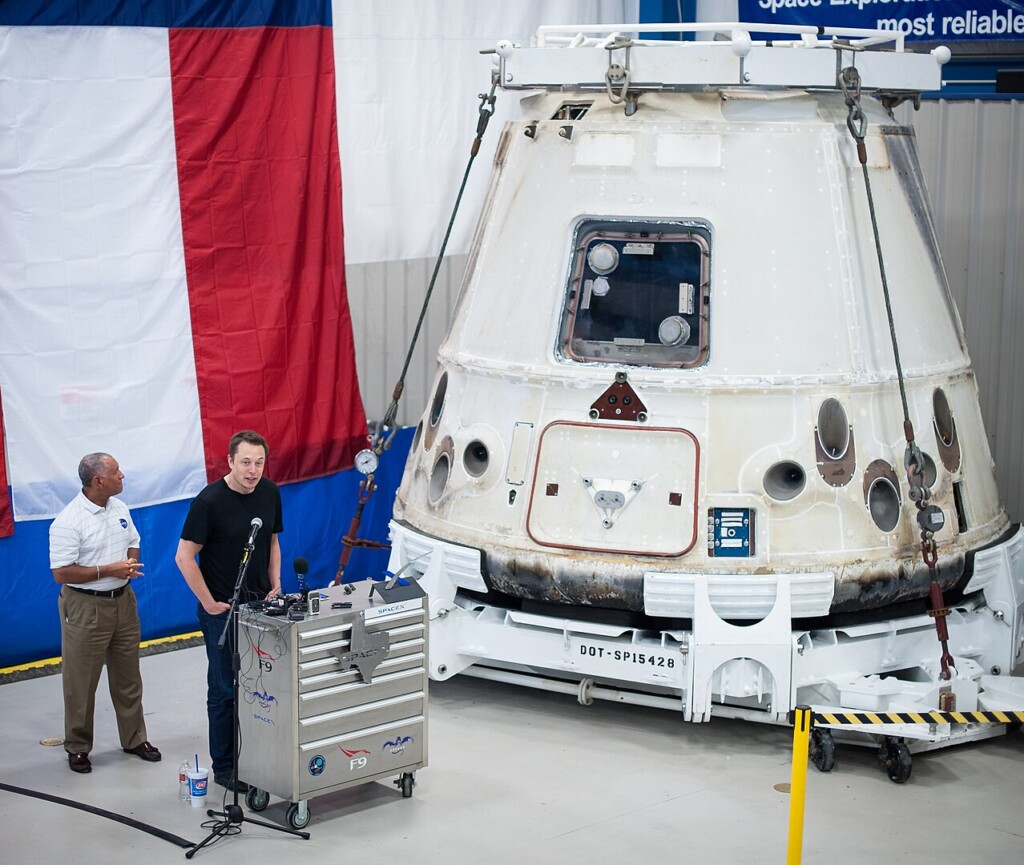
The capsule was also the first privately owned and manufactured spacecraft to be recovered after returning to Earth, and had been carried into space on only the third flight of the company’s two-stage Falcon 9 delivery rocket, which has since been used over 30 times.
Dragon stayed for almost six days during which the astronauts unloaded cargo, and then reloaded Dragon with Earth-bound cargo. On 31 May, Dragon unberthed from the ISS, its capsule landed in the Pacific Ocean off the California coast and was recovered. All the objectives of the mission were successfully completed, and the Falcon 9-Dragon system became certified to start regular cargo delivery missions to the ISS under the Commercial Resupply Services program.
MORE Good News on this Day:
- Delegates convened a Constitutional Convention in Philadelphia to write a new Constitution for the United States, with George Washington presiding (1787)
- Paul Weller, the ‘Modfather’—British singer-songwriter who shot to fame as a member of The Jam and Style Council (try the jazzy Cafe Bleu) in the 70s and 80s, was born (1958)
- Erik Weihenmayer, 33, of Boulder, Colorado, became the first blind person to reach the summit of Mount Everest (2001)
- Wonder Woman, starring Gal Gadot and Chris Pine, premiered in Los Angeles, the first superhero film directed by a woman—Patty Jenkins (2017)
61 years ago, the Organization for African Unity (OAU) was formed in Ethiopia with 32 members. The founding Chairman was the founding father of Ghana, Kwame Nkrumah, and the organization went on to attempt to bring recently decolonized Africa into a body of capable and prosperous nation-states. In 2002, South African chairman Thabo Mbeki officially dispanded the OAU, calling for a new form of organization that could be used to defend Africans in numerous internal conflicts, and the African Union, which persists today, was formed thereafter.
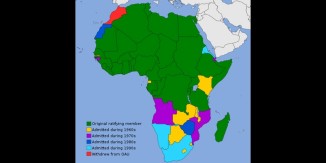
The OAU was also dedicated to the eradication of all forms of colonialism and white minority rule as, when it was established, there were several states that had not yet won their independence or were white minority-ruled. South Africa and Angola were two such countries.
The OAU proposed two ways of ridding the continent of colonialism and white minority rule. First, it would defend the interests of independent countries and help to pursue the independence those of still colonized ones. Secondly, it would remain neutral in terms of world affairs, preventing its members from being controlled once more by outside powers.
The OAU also aimed to stay neutral in terms of global politics, which would prevent them from being controlled once more by outside forces, a special danger with the Cold War. However the lack of enforceability limited the OAU’s power, and eventually, the parties recognized that something more judicial was needed, hence the AU. (1963)
46 years ago today, the Chinese government announced the end of a decades-long ban on the works of William Shakespeare, effectively ending the Cultural Revolution—the most destructive socio-political movement in history. Despite Mao Zedong’s ban on the Bard, Shakespeare has been beloved by the Chinese ever since the late 19th century. His plays have been interpreted strictly as philosophy as well as drama, and reproductions of his stories under the backdrop of China have appeared, like Akira Kurasawa did for Samurai films, in Chinese martial arts cinema.

Zhu Shenghao (1912-1944) was a Shakespearian scholar in China, who, despite living his whole live in poverty and illness, translated 31 of Shakespeare’s works into Mandarin. His manuscripts were destroyed twice in the Sino-Japanese War. But he remade them all after arriving in Taiwan.
Shakespeare was always in a curious state of limbo following the communist takeover. On the one hand, Karl Marx revered Shakespeare, and so originally the Maoists disseminated his works throughout the country. But over time the belief that only a strong Chinese culture could counter malign foreign influences saw Mao ban the plays, which were said to be selling like fresh buns the morning before the ban was to be enacted.
This year, with cooperation and assistance from the Shakespeare Birth Trust of Stratford-upon-Avon, a 1:1 scale model of the house in which the bard was born, and the one where he probably died, will be finished in the city of Fuzhou which recently decided by government edict it was to be the Shakespearean heart of all China. (1971)
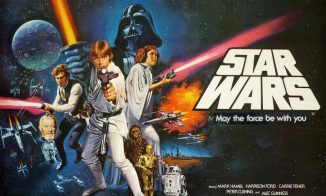
And, 47 years ago today, Star Wars, the film that heralded a new era of special effects for fantasy-adventure movies, was released. Created by George Lucas, the Star Wars franchise became a worldwide pop culture phenomenon through the merchandising of charismatic saga. The film was nominated for 11 Academy Awards and won 7, including Best Original Score, by John Williams. Oscar nods included: Alec Guinness nominated for Actor in a Supporting Role, George Lucas for Director; other nominations for Makeup; Sound Editing; Screenplay; and Best Picture. The film won the award for: Art Direction-Set Decoration, Costume Design, Film Editing, Sound (Mixing), Visual Effects, and a Special Achievement Award for its Alien, Creature, and Robot Voices. (1977)
And, 89 years ago today, in the waning days of his career, a 40-year-old Babe Ruth had been dragging down his team with lousy fielding, sluggish running, and spotty hitting. This day, however, he hit three monster home runs in a single game. The next week he retired.
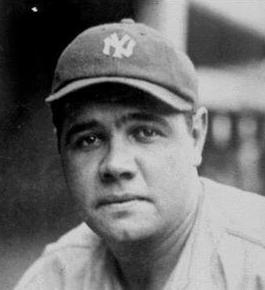
He proved himself the ‘Sultan of Swat‘ when he hit a ball so perfectly it soared over the mammoth right-field roof of Forbes Field, a feat no one else had ever achieved — a “prodigious drive” estimated at more than 500 feet. It was his last home run. It topped his lifetime tally at 714 and set a baseball record that stood for 39 years. (1935)
Also on this day, 71 years ago, the first public television station in the U.S. officially began broadcasting as KUHT from the campus of the University of Houston in Texas.
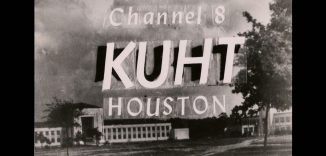 Established by Dr. John C. Schwarzwalder, a professor in the Radio-Television Department, it was the first station to broadcast under an educational non-profit license in the country. As an NET member station (National Educational Television), which eventually merged into PBS, the station offered televised college credit classes. Running 15 hours weekly, most courses aired at night to serve students who worked during the day. (1953)
Established by Dr. John C. Schwarzwalder, a professor in the Radio-Television Department, it was the first station to broadcast under an educational non-profit license in the country. As an NET member station (National Educational Television), which eventually merged into PBS, the station offered televised college credit classes. Running 15 hours weekly, most courses aired at night to serve students who worked during the day. (1953)
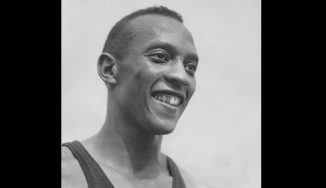
89 years ago today, a black college athlete at Ohio State University set three world records and tied another in “the greatest 45 minutes ever in sports.” At the Big Ten Track and Field Championships in Ann Arbor, Michigan, Jesse Owens ran and jumped into track and field immortality by equaling the world record for the 100-yard dash, and breaking the records in the 220-yard sprint, the 220-yard low hurdles, and the long jump (with a length unmatched for a quarter century).
Owens, the Alabama native who became a four-time gold medalist the following year at the Olympic Games—beating Hitler’s best track stars in Berlin—is often ranked one of the greatest athletes of the 20th century. WATCH a short clip to see why no one could duplicate his feat today… (1935)
And, this 1-minute clip, from the same documentary…
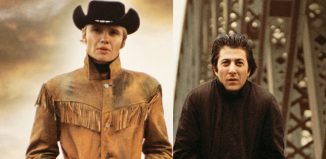
And, on this day in 1969, Midnight Cowboy premiered in theaters, starring Jon Voight and Dustin Hoffman. It won a plethora of awards including Academy Awards for Best Picture, Best Director (John Schlesinger), and Best Adapted Screenplay. The depressing plot centers around a Texan ‘cowboy’ who travels to New York City and ends up homeless with an ailing con man (Hoffman) teaching him the how to become a hustler.
(You might have heard a pedestrian call out in a Bronx accent if a car gets in their way, the now-famous expression from the movie, “Hey, I’m walkin’, here!”)
Midnight Cowboy, notable as the only X-rated film ever to win the Best Picture Oscar, is often listed in the top 100 greatest films of all time. Fred Neil’s theme song Everybody’s Talkin’ won a Grammy Award for vocalist Harry Nilsson. WATCH the trailer…
63 years ago today, President John F. Kennedy announced before a special joint session of the U.S. Congress his goal to initiate a project “to put a man on the Moon”—and return him safely to Earth—before the end of the decade.
NASA was ramped up with funding to launch the Apollo program, and Kennedy’s goal was achieved months before the deadline, on July 20, 1969, when Neil Armstrong stepped down into the lunar dirt. Though the Democratic president never lived to see the historic moon landing, because he was assassinated two years later, Kennedy’s leadership and long-term vision changed NASA in fundamental, enduring ways.
WATCH his famous answer to ‘why go to the moon?’… (1961)
SHARE the Milestones, Memories, and Music…




















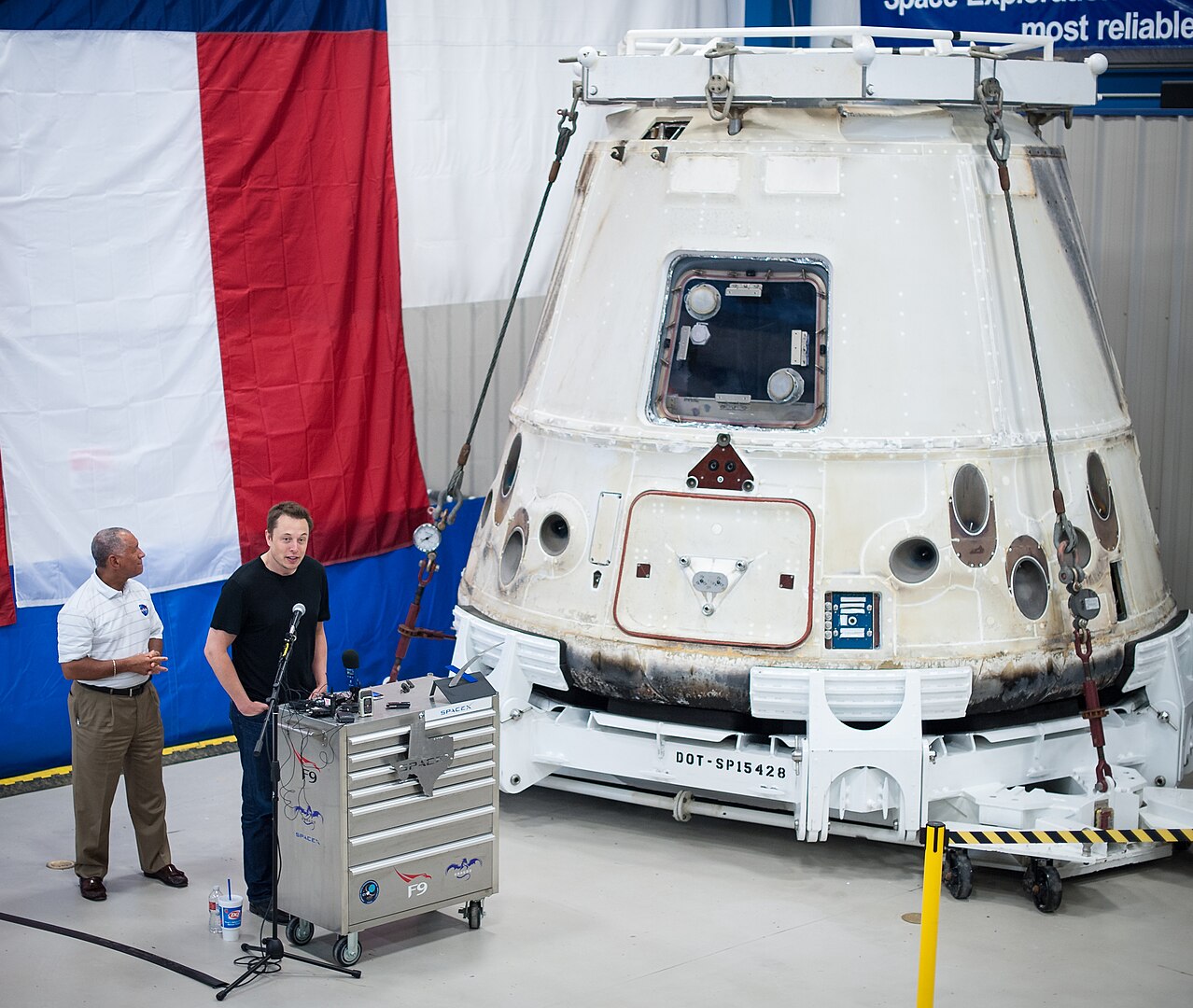
[…] post Good News in History, May 25 appeared first on Good News […]
[…] post Good News in History, May 25 appeared first on Good News […]
[…] post Good News in History, May 25 appeared first on Good News […]